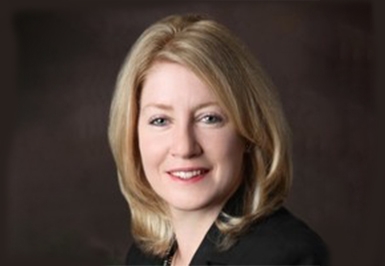 Wendy Graham, MBA
Wendy Graham, MBASitting in my first Town Hall at Honeywell, I still remember then-CEO Dave Cote’s “request” for functional transformation - “Reduce costs by 50 percent as a percent of sales while enhancing services”.
Over the next five years, I learned how a continuous process improvement mind-set enables organizations to evolve, stay flexible, and remain competitive. Even in a large multi-national company like Honeywell – each and every employee has the ability to improve short and long-term performance by embracing a mindset of continuous process improvements.
As Dave Cote shares in his recent Best Seller, Winning Now. Winning Later., Honeywell saved over $170M between 2004 and 2006 thanks to functional transformation initiatives. Pretty impressive – and had a profound impact on me at the outset of my career.
Fast forward to the first day at Johnson & Johnson --- the Janssen Pharmaceuticals CIO, Dr. Georgia Papathomas, outlined a similar request to me, as the newly appointed Finance IT business partner, and my IT Portfolio Manager counterpart
“We need to $20MM of cost savings - $10MM for the Enterprise and $10MM to reinvest in building up our data sciences capability. Finance and IT must work together more effectively and efficiently to leverage technology and data to improve our services to the business. We have a commitment and responsibility to our employees so none of these savings will come from lay-offs. Let’s get to work.”
What an opportunity! Right place. Right time. On the IT leadership team; in a position to influence strategic financial decisions; and an business partner with a compelling vision of J&J’s future.
Here’s how we achieved our $20MM savings target:
1.Building Cross-Functional Dream Teams - In each region, we paired a Center of Excellence finance manager with an IT portfolio manager; embedded shared goals and objectives to facilitate collaboration; and focused on metrics, management reporting, budgeting, and planning. Within the Portfolio Management team, a dedicated “Fab Four” focused on functional excellence initiatives targeting legacy cost reduction, “keeping the lights on” optimization, automation, and transformation. IT’s business and industry acumen coupled with finance’s rigor in analyzing IT investments were critical success factors.
Eliminating existing headcount was out of scope, but we were zealous in managing open headcount and new positions. Working with our Enterprise shared services team, we identified operations that could be transferred, outsourced, or centralized under a single point of control to reduce Janssen’s overhead.
Those expert IT resources were then redeployed to higher value projects with a greater return on investment to the business. The open headcount became an investment in acquiring a new mix of innovative IT data scientist skill-sets.
2.Throw Out the Traditional Playbook. Change the Game. A high-tech, fast-moving function open to innovation has many opportunities to optimize financial levers and add business value. IT is No Longer a Fixed Cost of Doing Business!
Reducing the IT “Estate” – Historically, a pharmaceutical company required a significant infrastructure footprint to meet the computing, data requirements, and unpredictable surges in business demand. Owning a large IT “estate” is not only costly, but also inhibits the team’s ability to act quickly to changing business requirements, take advantage of new technology, and deliver value to the business. J&J’s IT senior leadership adopted a new agile operating model focused on delivering aligned investments and services to the business.
Moving to the Cloud - Janssen reduced costs by being an early adopter of more modern networks and services which impacted infrastructure, platform, software, licensing, and ongoing maintenance costs. Flexible pricing contracts based on usage, subscription, or intelligent supplier “tiering” contributed to our cost savings and improved service delivery. Taking advantage of the disruptive technologies, we reconfigured our cost structure.
Bringing “Shadow IT” into the Fold – as the IT transformation progressed, we identified assets and software that the business had invested in without the involvement or management of IT. What was more than likely a purchase out of a genuine desire to get the job done posed as critical security and compliance concerns. Rather than getting bogged down in politics, we opened our arms. Transferring the monetary control of these areas of spend gave us additional opportunities to achieve economies of scale through contract negotiations and manage ongoing maintenance along with the rest of our assets.
3.“Go Slow to Go Fast” – another quote from Dave Cote Honeywell’s ex-CEO – until we had all the pieces in place, a few highly visible projects on a long list were selected to deliver, build momentum, and support in our initiatives. Initially there was push-back as some viewed the change in the way we did things as a threat to their role or career. However, the commitment and support of the CIO to protect her staff while innovating enabled the process improvement teams to confidently cut costs and enhance services. By celebrating successes, we unified the team behind the long-term goal of advancing therapies to get medicines to patients faster.
As finance leaders, we are in a dynamic position to work with our partners to change the functional cost structure - convert fixed to variable costs and reduce them; hold the remaining fixed costs constant while the business grows; assist the IT team in improving service quality; and recapture and redeploy precious funding to talent acquisition and/or other higher priority projects.
At J&J, it was an honor to work with so many talented IT and finance professionals who were invested in continuous improvements and committed to re-shaping the future direction of IT and the company.
Heading into COVID in 2020 – the team was already making good use of the cloud and collaboration strategies and in the best position to support and lead J&J through the crisis.









